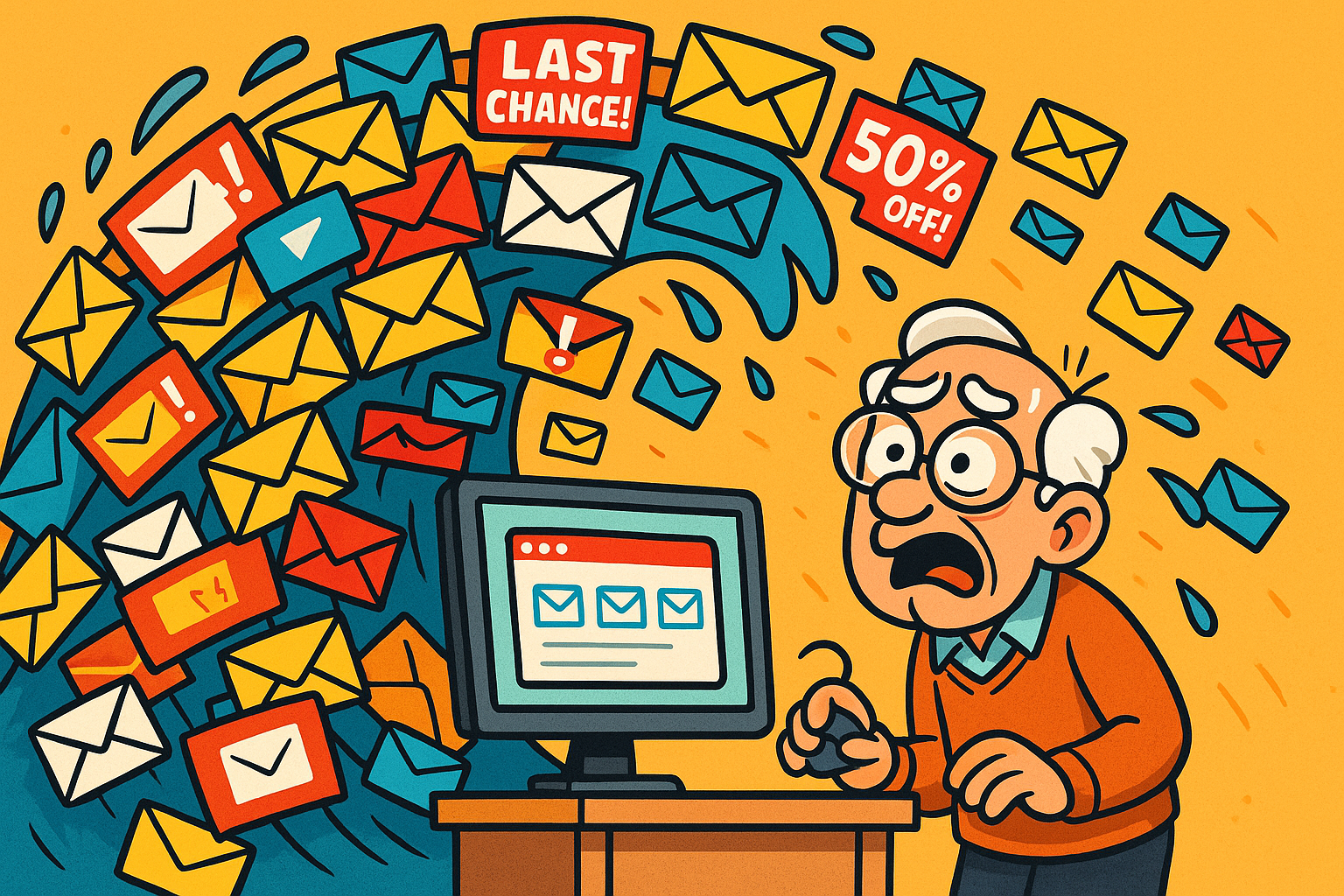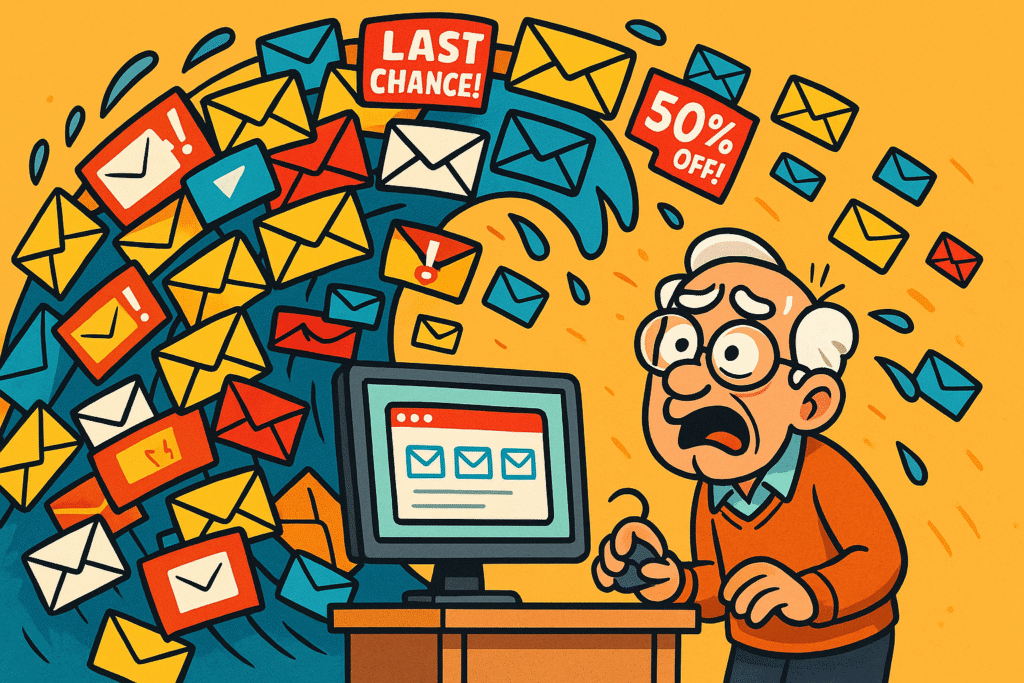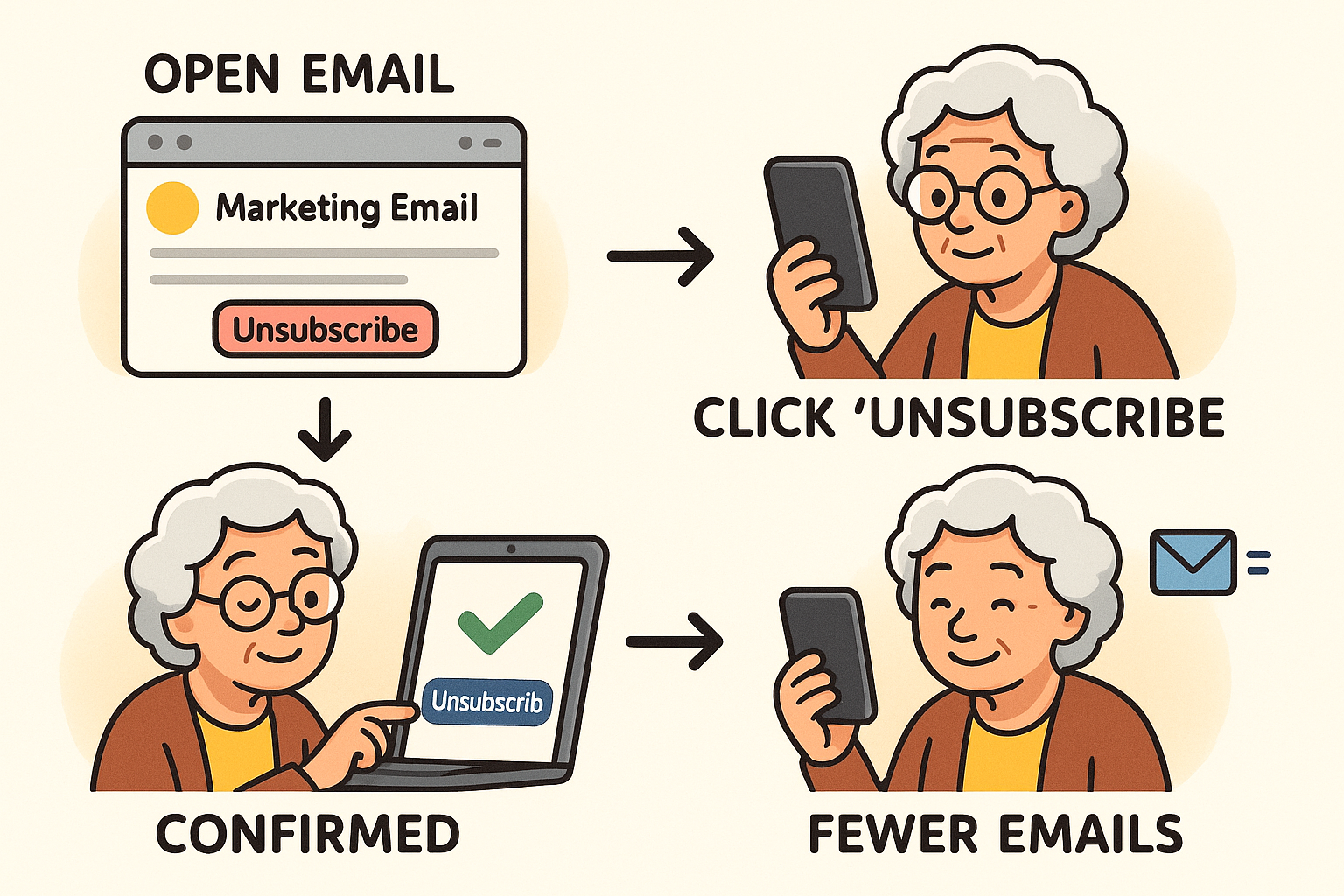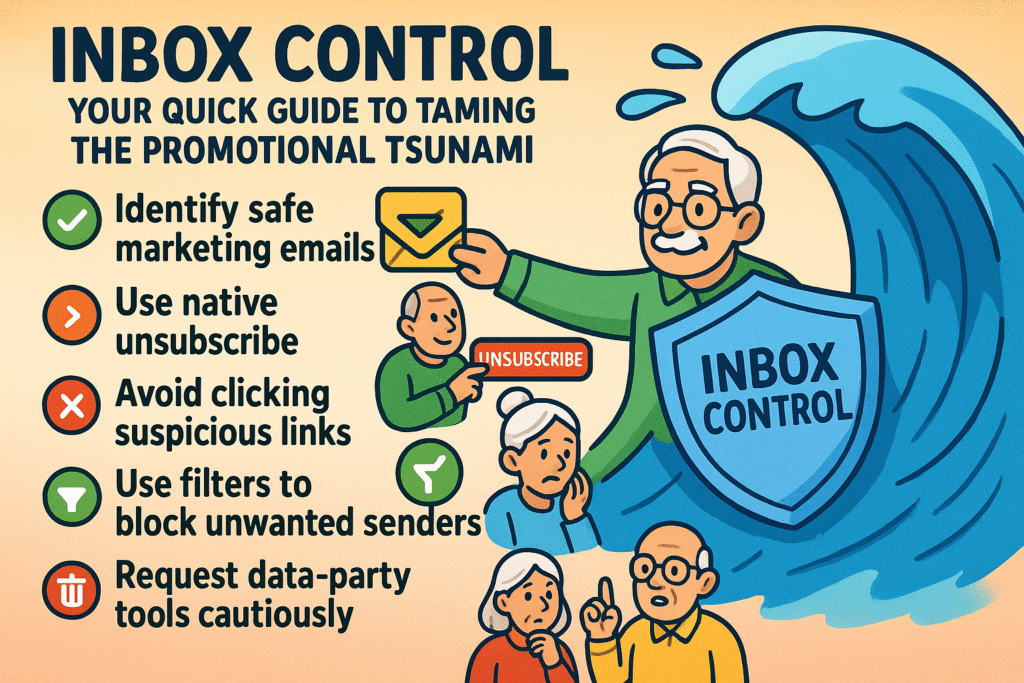
Newsletter Subscribe
Enter your email address below and subscribe to our newsletter


Have you ever opened your emailEmail, or electronic mail, is a digital communication tool that allows users to send and receive mes... More, hoping to see a note from your grandkids or a confirmation for your doctor’s appointment, only to be hit by a tidal wave of digital junk mail?
It’s a full-on assault: “50% OFF SOCKS YOU DON’T NEED!” “LAST CHANCE TO BUY A LAWNMOWER (You live in an apartment)!” “A Special Offer from That Store You Bought One Thing From in 2011!”
Trying to find an important message in that mess is like trying to find a single, specific needle in a haystack factory. It’s frustrating, it’s time-consuming, and it can make you want to throw your computer out the window (please don’t do that; the warranty probably doesn’t cover “defenestration by frustration”).
The good news is you don’t have to just sit there and take it. You can fight back. This guide is your battle plan for reclaiming your inboxAn Inbox is the main repository for new emails in any email client or service. Here, messages are co... More, one unsubscribeUnsubscribe is the action taken by users to remove themselves from a mailing list, newsletter, or su... More click at a time. We’ll show you how to tell the good guys from the bad guys and how to safely give unwanted emails the boot, for good.
Before we start unsubscribing with the righteous fury of a thousand scorned shoppers, we need to understand the enemy. In the world of unwanted email, there are two main culprits: the annoying-but-mostly-harmless Marketing Email and its evil twin, SpamSpam refers to unsolicited or unwanted messages, often sent in bulk, typically via email, text messa... More.
Marketing Emails are from legitimate businesses you’ve probably interacted with before. Maybe you bought something from them, signed up for a newsletter, or just looked at a pair of pants on their websiteA website is a collection of interconnected web pages or digital content that are accessible via the... More for too long. They’re like that persistent salesperson at the mall who really, really wants to tell you about their new line of wrinkle-free slacks. Annoying? Yes. Malicious? Usually not. Legally, these emails are required by the CAN-SPAM Act to include a way for you to opt out.
Spam (or PhishingPhishing involves cyber thieves creating fake communications, often appearing as emails from trusted... More Emails), on the other hand, is the digital equivalent of a shady character in a trench coat trying to sell you a “genuine” Rolex in a dark alley. These emails are from scammers and are designed to trick you into giving away personal information, clicking on dangerous links, or downloading computer viruses. They often have tempting but fake offers, like winning a lottery you never entered or an urgent warning about an account you don’t even have.
Telling them apart is your first line of defense. Never, ever click an “unsubscribe” linkA link, or hyperlink, is a tool used in electronic documents and websites to jump from one online lo... More in an email you suspect is spam. Doing so just confirms to the scammers that your email address is active, and they’ll likely send you even more junk.
Ready to start clearing out the clutter? Let’s arm you with the best tools for the job, starting with the safest and easiest methods.
Think of this as the precision strike. You’re targeting individual senders to stop their emails from ever reaching you again.
Method 1: The Safest Click in Town (Using Your Email Provider’s Magic Button)
The absolute safest way to unsubscribe is to let your email program do the work for you. Services like Gmail, Outlook, and Yahoo Mail are pretty smart. They can often spot a legitimate mailing list and will give you a helpful “Unsubscribe” button right at the top of the email, near the sender’s name.
When you click this, your email provider uses a special, hidden code in the email (called a “List-Unsubscribe header” for you tech-curious folks) to send the unsubscribe request on your behalf. You never have to click a link in the email itself, which makes it much safer.

Follow this step-by-step guide to safely and efficiently unsubscribe from marketing emails using your email client’s native unsubscribe feature, reducing inbox clutter without risk.
Method 2: The Old-Fashioned Way (Using the Link in the Footer)
If you don’t see an unsubscribe button at the top, scrollScrolling is what you do when you move up or down on a screen to see more of a webpage, email, or do... More all the way down to the bottom of the email. In the tiny, microscopic print designed by lawyers, you should find an “Unsubscribe” or “Manage Preferences” link.
Safety Check: Only click this link if you are 100% certain the email is from a company you know and trust. If it looks even a little fishy, don’t risk it. Just delete it or mark it as spam.
Sometimes, you unsubscribe, and the emails just… keep… coming. Or worse, there’s no unsubscribe link at all (which is a big no-no for legitimate marketers). In these cases, it’s time to bring out the bigger guns.
Once you’ve mastered the basics, you can explore some more powerful strategies for total inbox domination.
Sometimes, you don’t want to completely break up with a company. You just want them to talk to you a little less. When you see a “Manage Preferences” link, click it! This often takes you to a page where you can choose what kind of emails you get.
For example, you could say, “Stop sending me daily deals, but please let me know about the big yearly sale.” It’s a great way to reduce clutter without missing out on the good stuff.
If your inbox is a disaster zone of epic proportions, you might consider a third-party service like Unroll.Me or Clean Email. These tools scan your inbox and show you a list of all your subscriptions, allowing you to unsubscribe from dozens of them with a few clicks.
A Word of Caution: Using these services is like giving a cleaning service the keys to your house. You are granting them access to your entire inbox. While reputable services have security measures in place, it’s a trade-off between convenience and privacy. Always read their privacy policy before signing up.
Feeling empowered? Here’s a quick plan to get you started on your quest for a cleaner, calmer inbox.

Keep this handy checklist to remember effective and safe strategies for controlling marketing email overload and maintaining a stress-free inbox.
Your inbox doesn’t have to be a digital dumping ground. By learning to spot the difference between marketing and malice, and by using the right tools safely, you can turn that promotional tsunami into a gentle, manageable stream.
It depends! If the email is from a well-known, legitimate company you recognize (like a major department store, airline, or online service), the link is almost always safe. If the email looks suspicious, has spelling errors, or is from a sender you’ve never heard of, do not click the link. It’s better to use your email provider’s built-in unsubscribe button at the top of the message or simply mark the email as spam.
The fastest method is to use a third-party bulk unsubscribe service. However, be mindful of the privacy concerns mentioned above. A safer, though more manual, approach is to take 10 minutes each day to go through your inbox and unsubscribe from 10-15 senders. It adds up quickly!
The CAN-SPAM law gives companies 10 business days to honor your request. So, you might see a few more emails sneak through after you unsubscribe. If they continue after two weeks, it’s time to block the sender and, if you feel strongly about it, report them to the FTC.
Think of it this way: Unsubscribing is like politely telling a salesperson, “No thank you, I’m not interested.” Marking as spam is like hitting a panic button that tells your email provider, “This person is a threat! Don’t let them or anyone who looks like them in here again!” You should only mark emails as spam if they are truly deceptive or malicious. For legitimate businesses, it’s always better to unsubscribe first.